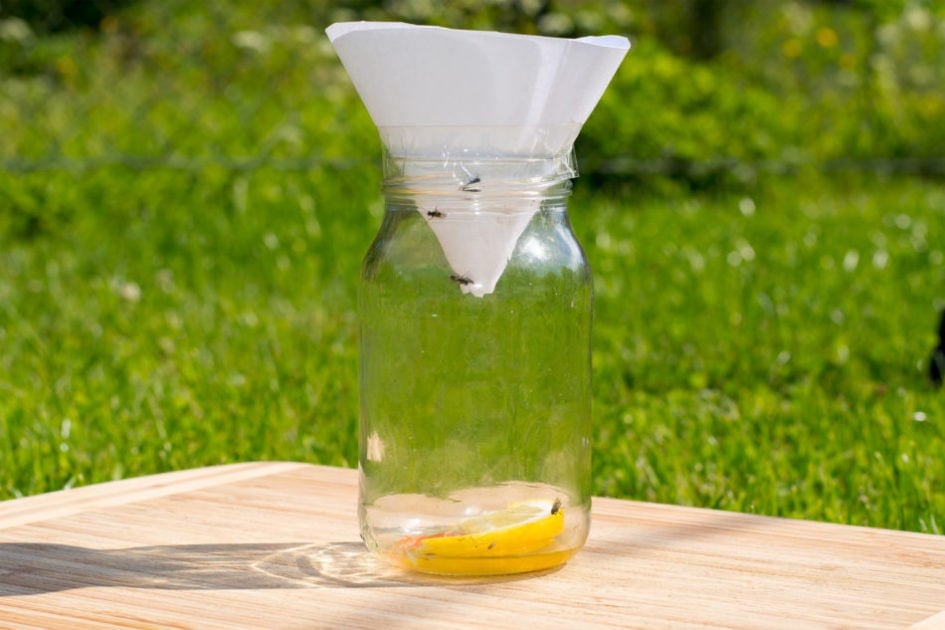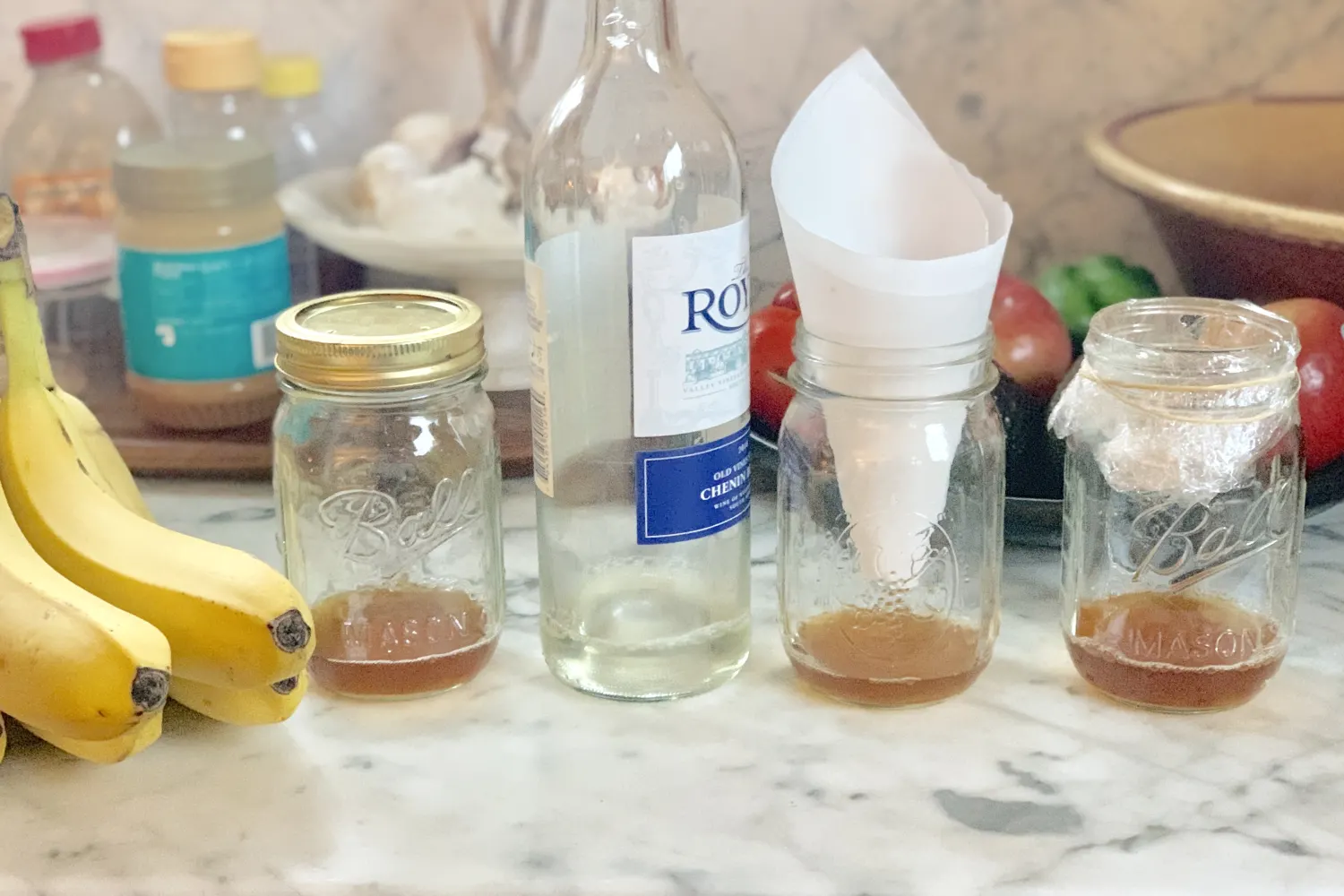Overview
Fruit flies are among the tiny pests which can get out of hand in a short period of time. They mass on ripened fruits and vegetables, garbage cans, drains and any area that they can locate moisture and organic material. However, there is no need to panic as their removal is not as hard as you may imagine.
In this article, you are going to read along with the best ways to trap fruit flies at home and in stores.
What Are Fruit Flies?
Fruit flies (scientific name Drosophila melanogaster) are little flying insects, which are usually about 1/8 of an inch long. They are brownish or tan, and they have red eyes, are attracted to ripened or fermented produce.
An individual female fruit fly is capable of laying 500 eggs which hatch in 24 to 30 hours time. This is why an infestation can easily go out of control.
Why Do Fruit Flies Appear?
Fruit flies are attracted to sugary, moist environments. Here are the main reasons they show up in your home:
- Mushy fruits or vegetables in the counter
- Dirty dishes or food on the sink
- Uncovered rubbish mounds or compost
- A spilt juice or excessive drinking
- Wet moppings, dishes cloths or pipes
Even a tiny piece of fruit left behind can attract dozens of fruit flies overnight.
Homemade Fruit Fly Trap Ideas
You do not have to run to the store immediately. There are some traps that may be very effective and can be prepared using items that you have in your kitchen.
1. Apple Cider Vinegar and Dish Soap Trap
This is the most popular and effective DIY method.
How to make it:
- Place 1/4 cup of apple cider vinegar into a small bowl, or jar.
- Put in a few drops of dish soap (breaks the surface tension).
- Put the container open or wrap on plastic material and make small holes.
How it works:
The fruit flies are attracted by the vinegar. After landing on the ground the dish soap makes them sink and drown.
2. Fruit and Plastic Wrap Trap
If you don’t have vinegar, ripe fruit can do the job.
What you need:
- A small jar or bowl
- A piece of overripe banana, peach, or mango
- Plastic wrap
- Toothpick
How to make it:
- Put the fruit into the bottom of the jar.
- Put a plastic wrap over the jar.
- Make some tiny holes in the plastic wrap.
How it works:
The holes attract fruit flies but they are unable to escape.

3. Red Wine Trap
Leftover wine can be put to good use.
What to do:
- Take a small portion of red wine.
- Add a drop of a dishwashing liquid.
- Just have it at your kitchen counter, uncovered.
Fruit flies are tempted by the smell of ripening wine. The dish soap encloses them.
4. Milk, Sugar, and Pepper Trap
This method dates back to the 1800s!
Recipe:
- 1 cup of milk
- 4 tablespoons of sugar
- 2 tablespoons of ground black pepper
Instructions:
- Put the mixture to simmer in a saucepan (10 minutes).
- Add it in a shallow dish.
- Put the dish where fruit flies can be found.
Flies are attracted to the smell and drown in the mixture.
Types of Lilies, Exploring Nature’s Most Elegant Blooms
Store-Bought Fruit Fly Traps
When you want to use a commercial product, there are some commercial traps that are very effective, safe to use inside kitchens.
1. TERRO Fruit Fly Trap
- Apple-shaped container
- Uses food based liquid bait
- Non toxic and effective for up to 30 days
2. Aunt Fannie’s FlyPunch!
- Natural, vinegar based solution
- Safe around food and pets
- Just open the lid and set it out
3. Sticky Traps
- Bright yellow sticky sheets
- Hang near fruit or compost bins
- Catches not only fruit flies but also fungus gnats

How to Prevent Fruit Fly Infestations
Trapping is great, but prevention is the long-term solution. Here are effective tips:
1. The Produce must be Stored in a Store
Store fresh vegetables and fruits that are ripe in the fridge. Do not leave them exposed at counters.
2. Exercise immediate clean up of spills.
Fruit flies are fond of sugar and fermentation. Clean up spills of juice, wine, soda, or alcohol as soon as they are present.
3. Throw the Trash
It should not keep food scraps in the trash or compost bins. Empty them out as required on a daily basis.
4. Clean Drains Sinks
Fruit flies are usually developed in wet organic matter within the drains. At least once every week, pour your drains with boiling water, vinegar or baking soda.
5. Clean Dinner Immediately
Fruit flies are attracted to dirty dishes, particularly fruit juice or wine stained residues. Wash them immediately after use or rinse them.
What to Avoid When Dealing with Fruit Flies
- Do not just swat them. The breeding cycle will not be prevented by that.
- Avoid chemical sprays in the food area or preparation. Kitchens do not qualify to be sprayed with many sprays.
- Never disregard the source. Traps minimally tackle the apparent flies only. You will have to get rid of where they put eggs.
How Long Does It Take to Get Rid of Fruit Flies?
Through an effective trap and cleaning plan, the majority of individuals will experience an enormous enhancement in 2-4 days. To totally eliminate it, a week of regular trapping and cleaning is required.
Do Fruit Flies Pose Any Health Risks?
Indeed, fruit flies can have the potential of spoiling clean surfaces with bacteria and other pathogens brought about by rotting food. They do not bite but are of benefit to your hygiene like in the form of health hazards when carelessly lying in your kitchen. The issue is good to solve within a small period of time.
When to Call a Professional
When you have exhausted all traps, done all cleaning and yet these flies still re-emerge, then it is time to get a pest control expert. Constant infestations may be lurking in:
- Wall voids
- Floor drains
- Garbage disposals
Professional grade solutions may be needed for deep infestations.
Conclusion
Fruit flies are bothersome, but you do not have to freak out. Whether it is cheap, easy-to-make homemade traps made out of vinegar or wine to affordable commercial ones, there is a lot that you can do to fight back. All you have to do is to remember that to get rid of fruit flies you have to eliminate their breeding place. Catch and trap them, clean out the mess and you can have a fruit fly free kitchen all season long.

